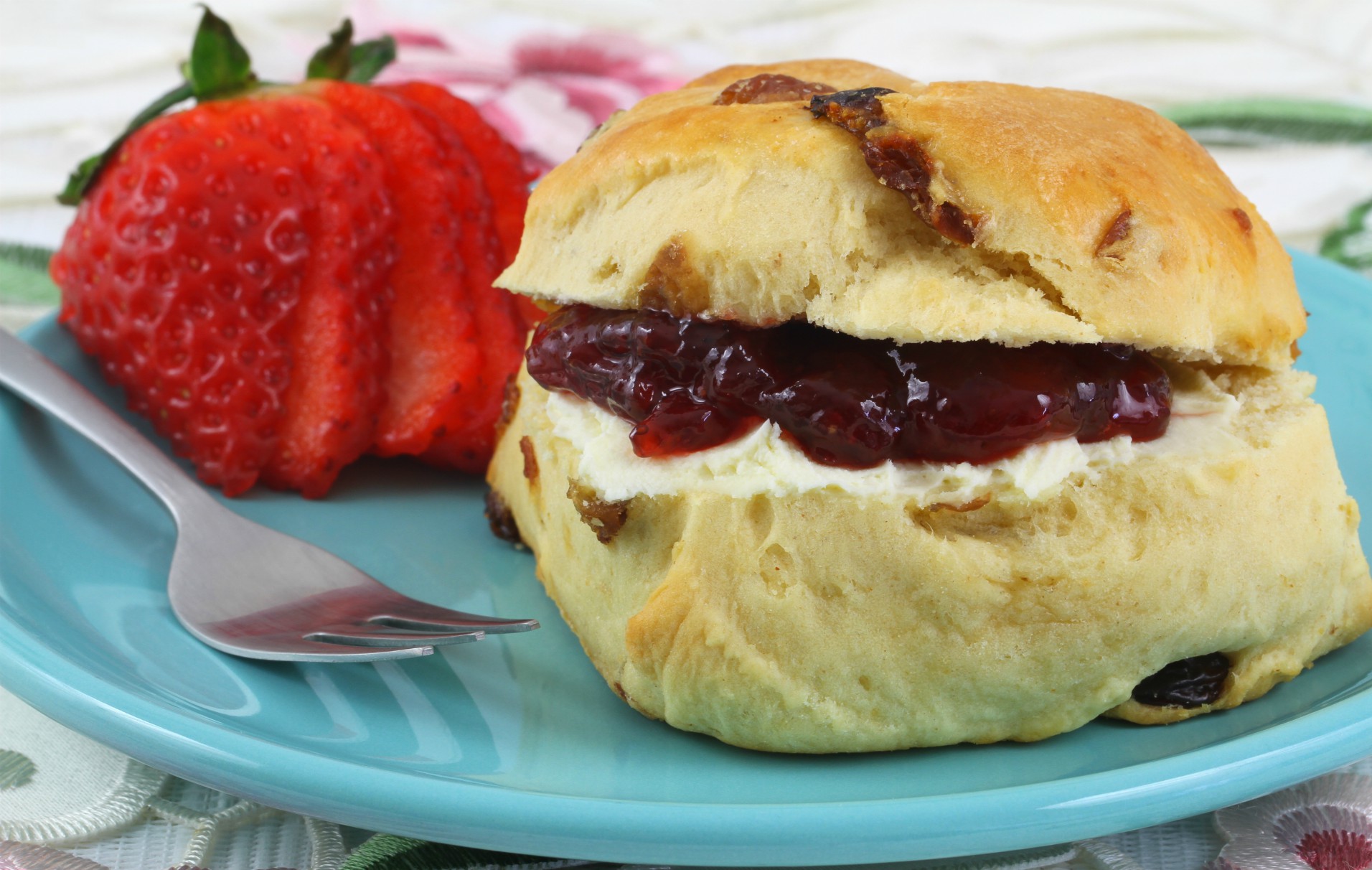
Learn how to make classic scones, ideal for an afternoon tea, with our easy recipe.
These scones are a classic English staple - light and fluffy, with just the right amount of sultanas. This recipe will make nine scones, which can be prepped and cooked in about half an hour - the quick turnaround is ideal, as they’re best served warm. You’ll know when your scone is done because it will be light brown in colour. This means it’s time to take it out the oven as the darker the scone, the more likely it is to be dry and crumbly inside.
No scones are complete without lashings of clotted cream and jam - but which comes first? If you’re in Devon, the strawberry jam is spread first, topped by the cream. In Cornwall, it’s the other way around. However you chose to top your scones, they’re best served with a cuppa tea.
Ingredients
- 225g self-raising flour
- 2tsp baking powder
- 50g butter, chilled and diced
- 2tbsp caster sugar
- 50g sultanas
- 1 large egg
- 100ml milk
- Jam and clotted cream (to serve)
WEIGHT CONVERTER
Method
- Preheat the oven to 220°C/425°F/Gas Mark7. Sift the flour into a large bowl with the baking powder.
- Add the chilled and diced butter and rub in with your fingertips to make fine breadcrumbs. Stir in the caster sugar and sultanas.
- Beat 1 large egg with the milk. Pour nearly all the egg mixture into the bowl of flour and butter and mix with a knife to form soft, but not sticky, dough. Add a little more of the egg mixture if needed.
- Turn the dough on to a floured surface and knead lightly then roll out to a 2cm (3/4in) thickness. Use a 5cm (2in) round cutter to stamp out approx 9 scones, gently re-rolling the dough as necessary.
- Place the scones on a lightly greased baking sheet. Arrange them so the sides are just touching, as this helps them to rise evenly. Brush the tops with any remaining egg mixture or a little milk and bake for 10-12 mins until golden brown. Cool on a wire rack.
- Split and serve with jam and clotted cream, if liked.
Top tips for making scones:
For the best light and fluffy scones, be sure not to over knead the dough. Over-kneading will take air out of the mixture and the scones won’t rise as tall.
To make gluten free scones, swap out the self-raising flour for a gluten free flour. You can also make savoury scones, with cheese scones being a popular option for a late lunch.
You might also like...
Parenting advice, hot topics, best buys and family finance tips delivered straight to your inbox.

Jessica Dady is Food Editor at GoodtoKnow and has over 12 years of experience as a digital editor, specialising in all things food, recipes, and SEO. From the must-buy seasonal food hampers and advent calendars for Christmas to the family-friendly air fryers that’ll make dinner time a breeze, Jessica loves trying and testing various food products to find the best of the best for the busy parents among us. Over the years of working with GoodtoKnow, Jessica has had the privilege of working alongside Future’s Test Kitchen to create exclusive videos - as well as writing, testing, and shooting her own recipes. When she’s not embracing the great outdoors with her family at the weekends, Jessica enjoys baking up a storm in the kitchen with her favourite bakes being chocolate chip cookies, cupcakes, and a tray of gooey chocolate brownies.
